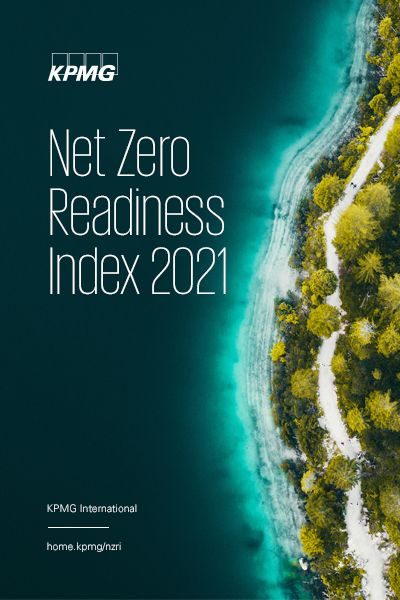Italy faces high exposure to physical risks of climate change and faces significant effort on transport and buildings, but is set to benefit from adoption of strong EU policies and potential for offshore wind and solar.
Political will
Italy is ranked 10th overall and 11th for national preparedness, with key contributors including market-based emissions trading mechanisms and strong public support for climate action.
Italy’s National Recovery and Resilience Plan published in May 2021 includes ecological transition as one of its six main areas, with EUR59 billion (USD69 billion) allocated to improved building efficiency, energy transition and sustainable mobility.1 PierMario Barzaghi, Head of Sustainability and Climate Change Services, KPMG in Italy, says this includes encouraging industrial users to make direct use of renewable sources and alternatives including hydrogen, as well as carbon capture and storage technologies, and greater use of circularity. In addition to circular incentives, options for corporate sourcing of renewable energy and industrial decarbonization legislation contribute to the country’s sixth-placed ranking on the industry sector, which also benefits from strong EU policies in this area.

A nationally specific transition
Barzaghi says that Italy’s main focus will be on energy transformation, ending the use of coal and plans to increase the use of renewables so they provide 70 percent use of electricity by 2030. However, this will require more agility from government: “In order to help ensure the ecological transition, it is necessary to support a bureaucratic transition, in order to reduce the lengthy procedures authorized, for example, for the installation of plants for renewables,” he says.
Italy is more exposed than some other European countries to the risks of climate change, due partly to its long coastline. But it also has more to gain from a transition to renewable power, with strong potential from offshore wind and solar, taking advantage of high irradiation levels in the south, as this can replace the use of oil and gas where the country has scarce domestic resources. “The energy transition represents an opportunity for Italy, and the path to be taken must be specific to the country,” he says.

Sectoral challenges
On transport, the country will need to shift away from its currently high use of cars and trucks to rail, which is low in usage by European standards. Road vehicles, which are older and more polluting than the average for the continent, will need to be replaced with electric vehicles, which are currently little used. Unlike some countries, Italy had not announced a ban on the sale of vehicles using combustion engines but in July 2021, the EU announced an effective ban on the sale of new petrol and diesel cars as part of its 2035 emissions target.
Although new buildings are covered by a rigorous regulatory framework that includes high levels of efficiency, nearly two-thirds of Italy’s residential buildings were constructed before the country’s first law on energy saving was passed in 1976. Barzaghi says progress in this area will depend on deep renovation of existing buildings, adding “the effort required in this regard is decidedly challenging.” Around 70 percent of homes could use electric heat pumps for heating, with the remainder using green alternatives including solar thermal, district heating and hydrogen.
Italy’s performance on agriculture could be improved by technical changes such as changing cows’ diets to reduce methane emissions and adopting precision agriculture techniques that use fertilizers and protection products more efficiently. The country also has a high consumption of meat and dairy products, and there is room for improvement on food waste per person.
Contact
Connect with us
- Find office locations kpmg.findOfficeLocations
- kpmg.emailUs
- Social media @ KPMG kpmg.socialMedia
1 The National Recovery and Resilience Plan (NRRP), 'Italian Ministero dell'Economia e delle Finanze', 26 May 2021. https://www.mef.gov.it/en/focus/The-National-Recovery-and-Resilience-Plan-NRRP/



